Yearbook Heroes
Looking for inspiration, design tricks, how to make a great cover, promoting your yearbook and engaging your community?
Most recent
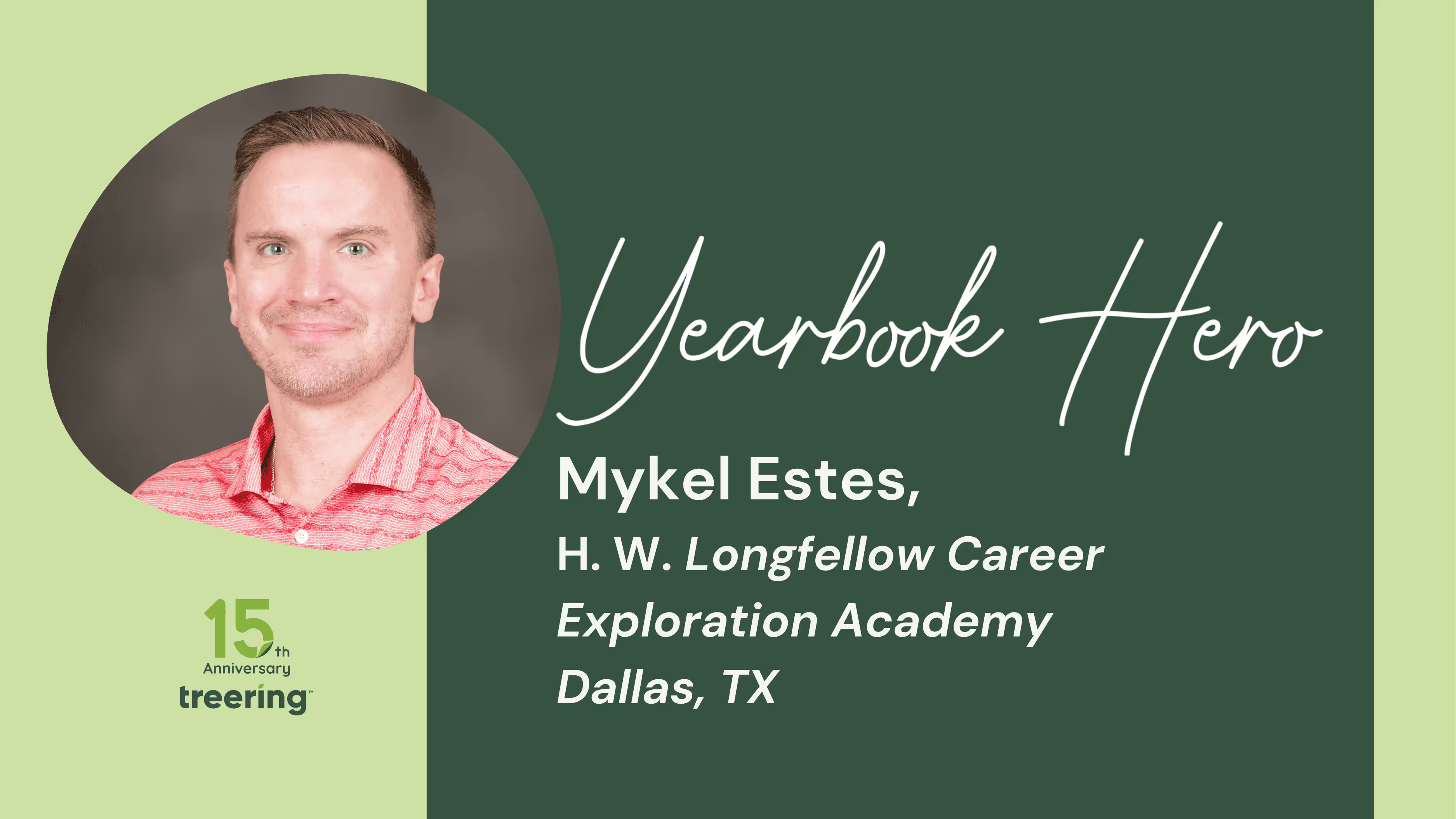
Yearbook Hero Mykel Estes modernizes memories
Treering Yearbook Heroes is a monthly feature focusing on yearbook tips and tricks.
For months, Mykel Estes was just a cool teacher we followed on X. Known in Dallas ISD for innovation and student engagement, the former Teacher of the Year (2023-2024) created a bracket so students could vote on their favorite yearbook theme. Estes revealed the theme at Longfellow Career Exploration Academy's first yearbook signing party in a decade.
Changing up how we do the yearbook this year at @LongfellowCEA —
— Mr. Mykel Estes, M.Ed. (@MrMykelEstes) August 20, 2024
Adding student voice is a critical goal! With @Treering's gallery of great themes we are incorporating a "Theme Thrown Down"!
Let's see what the winning concept will be! @disdactivities @DISDMagnets pic.twitter.com/0JMzz4jLVy
A reading and language arts teacher, Estes became the yearbook adviser after a staffing change. Instead of taking the proverbial reins, he rewrote the book.
How was your first yearbook a reboot for the school?
There are some things that they've always done, and this is a new iteration of the yearbook. We switched to Treering and even changed photography teams. Everything was new. And since I did take it on solo, I needed that. I needed that ability to streamline.
The previous books felt like a faculty and staff heirloom, when really, this is for students.
How do you keep the yearbook student-centric when you’re a solo adviser?
I started with a bunch of y'all's resources: the ladder, dos and don’ts, and Camp Yearbook. And I gave the sample package I received to the outgoing eighth-graders and told them, "Look through here."
It reminded me of those old school toy catalogs. They marked it up. I told them nothing was off the table.
Their suggestions became the collective basis for how I started the book. It was all over the place. The themes constantly changed, and that's when I had the “This isn't my yearbook” moment.
The March Madness-style "Theme Throwdown" bracket was how I ensured the theme would resonate with current students. What I like, and what older students liked, may not resonate with our current students. This was one way to get buy-in.
What happened when the students at Longfellow received the yearbook before school was out?
The yearbook's a really exciting kind of moment in a student's academic year, and from the pandemic on, the yearbook never arrived before the students left. There was a palpable disappointment in the students not being able to have that shared experience of looking for themselves in the yearbook and signing one another’s.
We do a big eighth-grade celebration week to commemorate the last time the cohort is together. (We feed into roughly 20 different high schools as a magnet school.) I really leaned into that nostalgia.
The eighth graders got them first. Again, leaning hard into that's their last time here. They get it first. Then we subsequently rolled it out to the lower grade levels.
What’s next for the yearbook?
We are a career academy. We have a journalism class coming up. We have a photojournalism class coming up. Those two classes will eventually marry in a year's time or so and be the production team for the yearbook.
Until then, I want to add student voices through quotes and make sure every kid is in the book. Every kid should at least be in the portraits. I want to expand that to a classroom and activity photo.
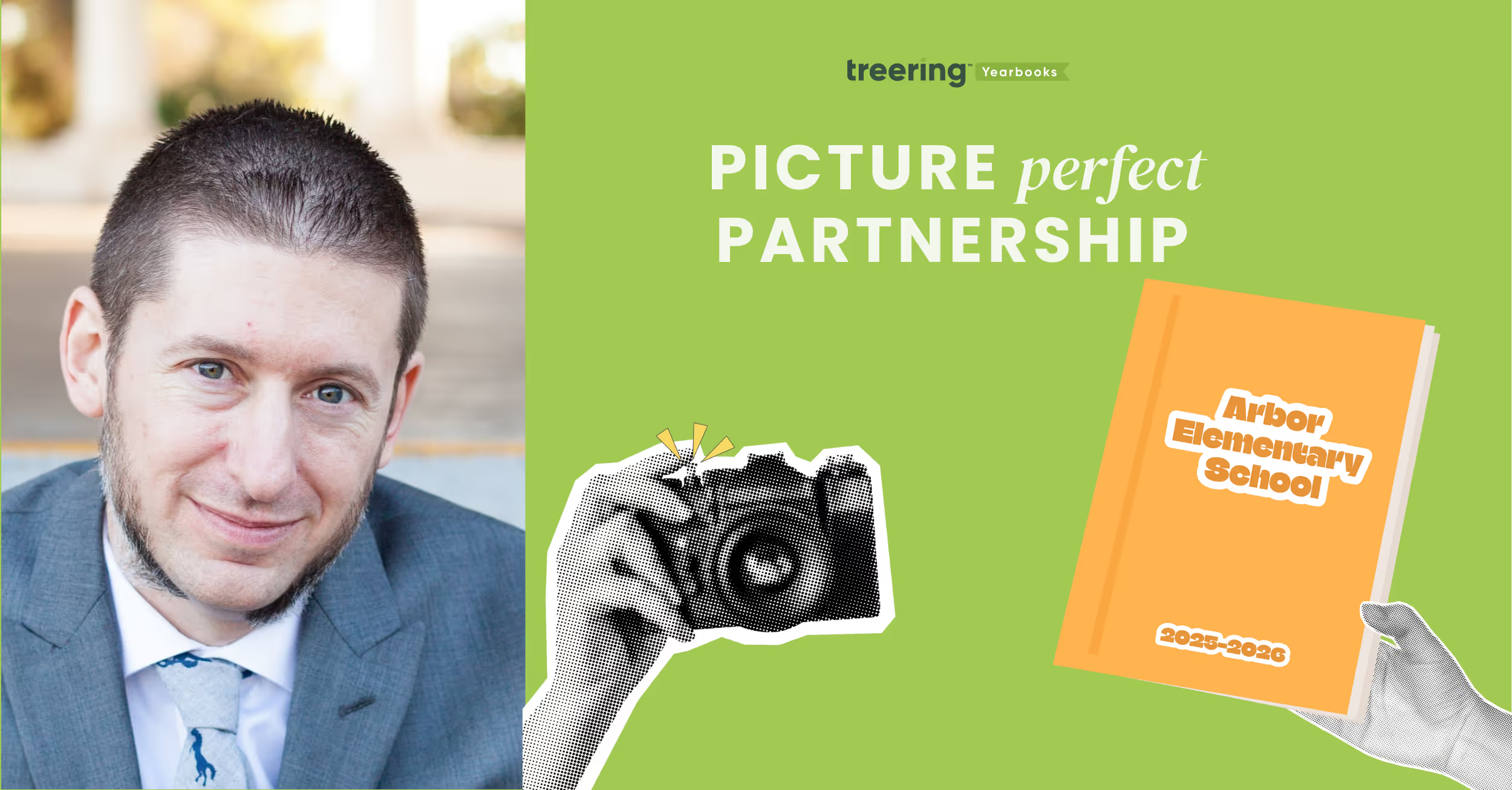
What Brandon Sumner knows about creating award-winning yearbooks
Brandon Sumner, President of Sumner Photography, wrote this month's "Picture Perfect Partnership" article. Sumner Photography is a California-based school photography company dedicated to capturing and preserving memories for educational communities. Through partnerships with platforms like Treering, Sumner Photography supports schools in creating exceptional yearbooks that serve as historical records and creative expressions of their unique identities.
In the world of school photography, few moments feel as good as seeing your partner schools get recognized on a national level. Recently, three schools that Sumner Photography works with, Coronado Middle School, Reilly Elementary, and Ladera Ranch Elementary, became finalists in a nationwide yearbook cover contest. This achievement shows not only their creative vision but also what happens when photographers and yearbook teams work well together.
How the Partnership Started
When I first partnered with Treering ten years ago, I was drawn to their excellent customer care. This fits perfectly with Sumner Photography's commitment to serving West Coast schools. What started as a shared goal to preserve memories has grown bigger than I first imagined.
School photography and yearbooks share the same basic mission: capturing and preserving memories for a lifetime. But our collaboration has grown beyond just taking pictures. Today, we're actively helping yearbook teams with their creative process, knowing that all the logistics and details involved in making a yearbook can overwhelm the very people trying to create those lasting memories.
The more we can make these processes easier—or remove roadblocks entirely—the more time yearbook teams have to focus on what really matters: telling stories, being creative, and making memories. This idea has become the heart of our partnership with Treering and the schools we serve.
Three Great Covers, Three Great Stories
Each of the three finalist covers from our partner schools tells a different story about their community and creative approach:
Coronado Middle School had a fantastic color scheme that immediately captures the unique vibe of their coastal community. Having spent time in Coronado, I can tell you, this city has a special feel. Their yearbook cover captures that perfectly. The design choices show not just good taste but a real understanding of their school's identity and place in the community.
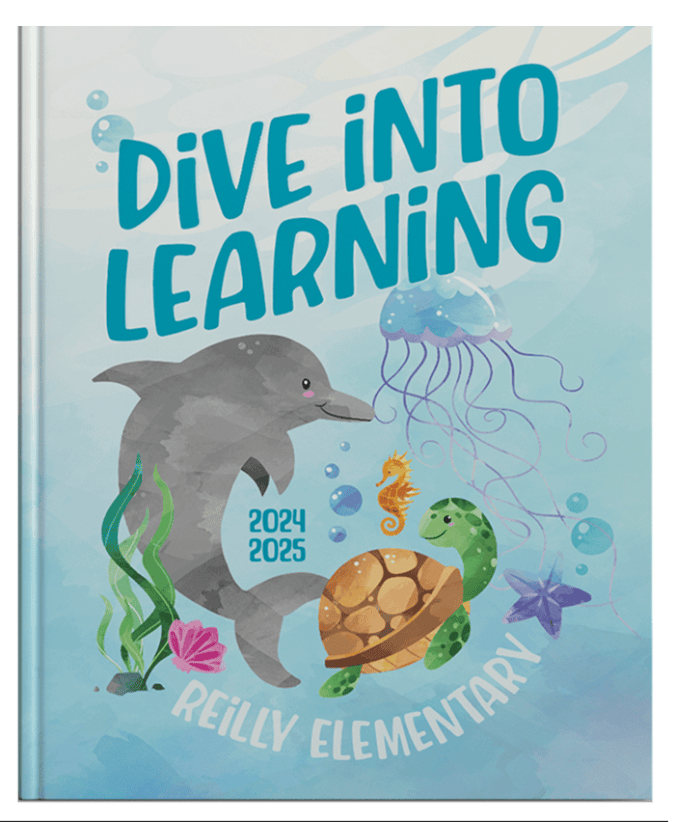
Reilly Elementary showed amazing attention to detail in their "Dive Into Learning" theme. Every element, from the biggest design pieces to the smallest details, works together beautifully to bring their concept to life. This kind of thoughtful design is what makes the difference between good yearbooks and truly memorable ones.
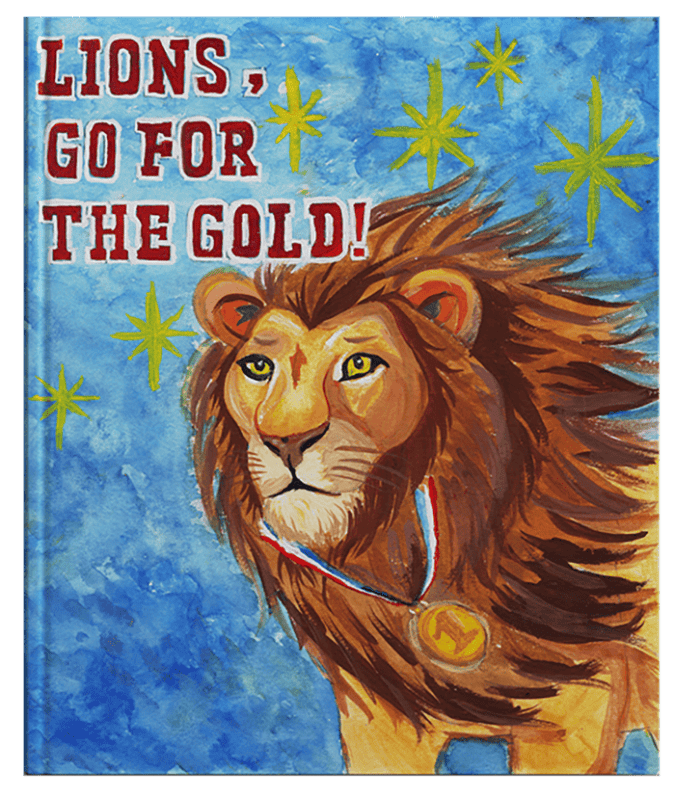
Ladera Ranch Elementary impressed me with student-created artwork that shows the incredible talent within their school community. The expressive eyes in their lion mascot design—created by student artist Fiona—show the real creativity that comes out when young people get the platform and tools to express themselves.
What This Means for the Future
These three covers represent something bigger than individual school wins; they show the range of creative possibilities available in yearbook design today. What gets me most excited about yearbooks' future is how they're evolving beyond simple documentation into true creative outlets.
Yearbooks do two things: they store memories and give people a platform for artistic expression. The finalists' covers from our partner schools show how art and design can bring up feelings that readers connect with the memories captured in photos. This emotional connection turns a yearbook from a simple record into something people treasure.
The Treering platform plays a huge role in this creative evolution by making sophisticated design tools available to yearbook teams without extensive publishing backgrounds.
Something You Can Hold
In our increasingly digital world, there's something special about holding a yearbook or photograph in your hands. This physical interaction requires intention—you have to choose to engage with it, to turn the pages, to pause and remember. This hands-on experience creates a different connection than scrolling through digital images.
I'm excited to see how yearbook teams and students continue to capture our ever-digitizing world in physical form. The challenge and opportunity are in translating the richness of digital experiences into formats that can be held, shared, and treasured for decades to come.
Looking Ahead
The success of Coronado Middle, Reilly Elementary, and Ladera Ranch Elementary in this national competition shows the incredible potential that comes when photographers, yearbook teams, and technology platforms work together smoothly. At Sumner Photography, we're committed to supporting the creative process while handling the technical stuff that can distract from the artistic vision.
These three finalist covers are just the beginning. As we continue to partner with schools and support their creative work through our collaboration with Treering, I look forward to seeing how the next generation of yearbook creators will push the boundaries of what's possible in preserving and presenting their school memories.
The combination of photography, design, and storytelling in yearbooks creates unique opportunities to capture not just what happened, but how it felt. That's a mission worth pursuing with passion and excellence.
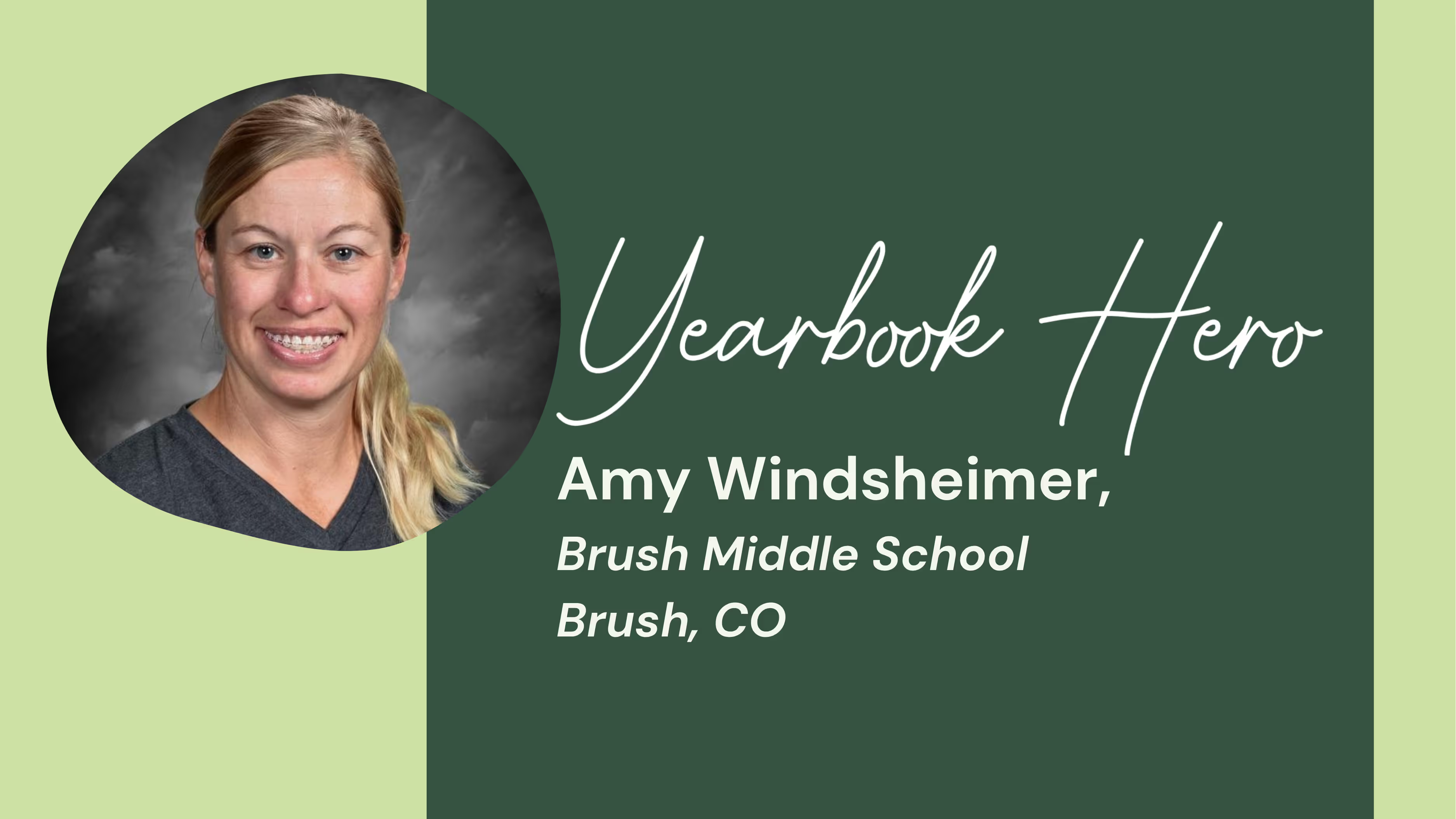
Authentic activities with Yearbook Hero Amy Windsheimer
Treering Yearbook Heroes is a monthly feature focusing on yearbook tips and tricks.
Yearbook Hero Amy Windsheimer transformed a yearbook program on the chopping block into a thriving journalism class. After a year of co-creating Brush Middle School's book with a colleague, they opened it up for students. Windsheimer wanted the class to focus on both visual and oral communication skills. And she nailed it.
You truly collaborated with your whole community. Tell us what you did.
We used some of our yearbook fundraising money to purchase two cameras, and a local photographer came in and showed the kids how to use them. The kids really got into it.
At the end of the school year, I reached out to news and media outlets because I wanted to take them to a newspaper printing place. We toured Townsquare Media, which has three different radio stations in Windsor, CO. The kids recorded a radio intro and outro. They played with the green screen.
A couple of the DJs taught us how the morning show works and shared their career path. We learned about their college experiences and about radio advertising, which was a cool 360 because that’s how we started the year: Our secondary school sells ads together. For a field trip, I took my yearbook class out into the community to do in-person sales.
How did you make selling ads in-person less scary for middle school students?
One unit of my yearbook class focused on public speaking. We talked about professionalism and public relations. The kids spent a week crafting and practicing an ad pitch for local businesses.
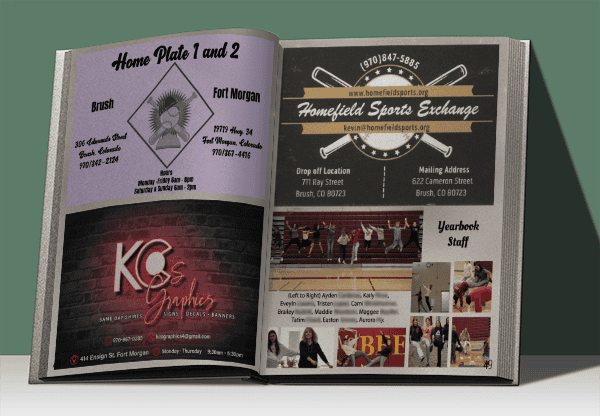
First, they went around and told any adult in the building who was interested in listening and sold them yearbook ads. Then, we had some simulations to prepare them to get turned down. I actually had one of the principals tell them, "Nope, I'm not interested," or “Well, I don't want to go as high as that route. What about this route?"
When we went out, they had matching T-shirts. There was a process for receiving and depositing funds in the activities account. The kids also worked with the business to create the ad.
We have a restaurant in town that purchased an ad from a pair of girls and said, "Well, do you guys want a cinnamon roll?" They had cinnamon rolls the size of a small plate. A family-owned bowling alley gave the middle and high school staff an hour of bowling to close out the day.
How many pages of ads did you end up with?
We filled nine pages. Our town has many awesome businesses, and they are so supportive.
How else do your students create the book?
It took us a while to decide on our the theme of our yearbook. They came up with five options, and they had to limit it to three, and then they finally decided on one. I told them to choose whatever style they wanted to make. Make it fun, make it creative, make it their book. And they really took off.
We broke the ladder down into fall sports and activities. I assigned two kids per page. One kid would sit there dictating, and the other kid would be working.
I rolled out a big touchscreen TV on a cart daily. Somebody would use it to work on their page. The best part about that TV was that it was big enough to see the layout easier, and it was more kid-friendly.
We’d also use it at the end of our deadline: I would make them all go through and proofread and edit and make sure that there weren't any pictures with inappropriate signs or anything that could not be school-appropriate. Then, I would see if there were any other pictures that we could add to it.
We had four mini deadlines: October 31, another one at Christmas, at the end of the third quarter, and then, of course, our yearbook had to be in by the end of April. It was a mad rush in April to get everything done.
I don’t see many middle school books with captions. How do you do it?
Creating captions is really hard, especially when the yearbook kids don't know all of the other kids. I'd encourage them to go speak to a specific teacher and see if they can help out. We used all our resources.
You equipped your students with public speaking, design, and sales skills. What else?
We have these big screens around campus that play a slideshow. I shared the Google Drive folders our students use to compile pictures of each activity. It’s as much real-time as we can possibly get. I watched kids stop and watch the pictures, and it's huge.
They're like, "Oh yeah, that was a fun picture to take." Or, "Oh, yeah, that was a fun activity that we did. Oh, that was funny." And there are these moments somebody posed and didn't know they were posing, and we got it on camera.
Adding marketing to the list.
When they go into high school, I feel like many of them who wanted to be in the yearbook class will take what we learned and take it to the next step of what the yearbook looks like.
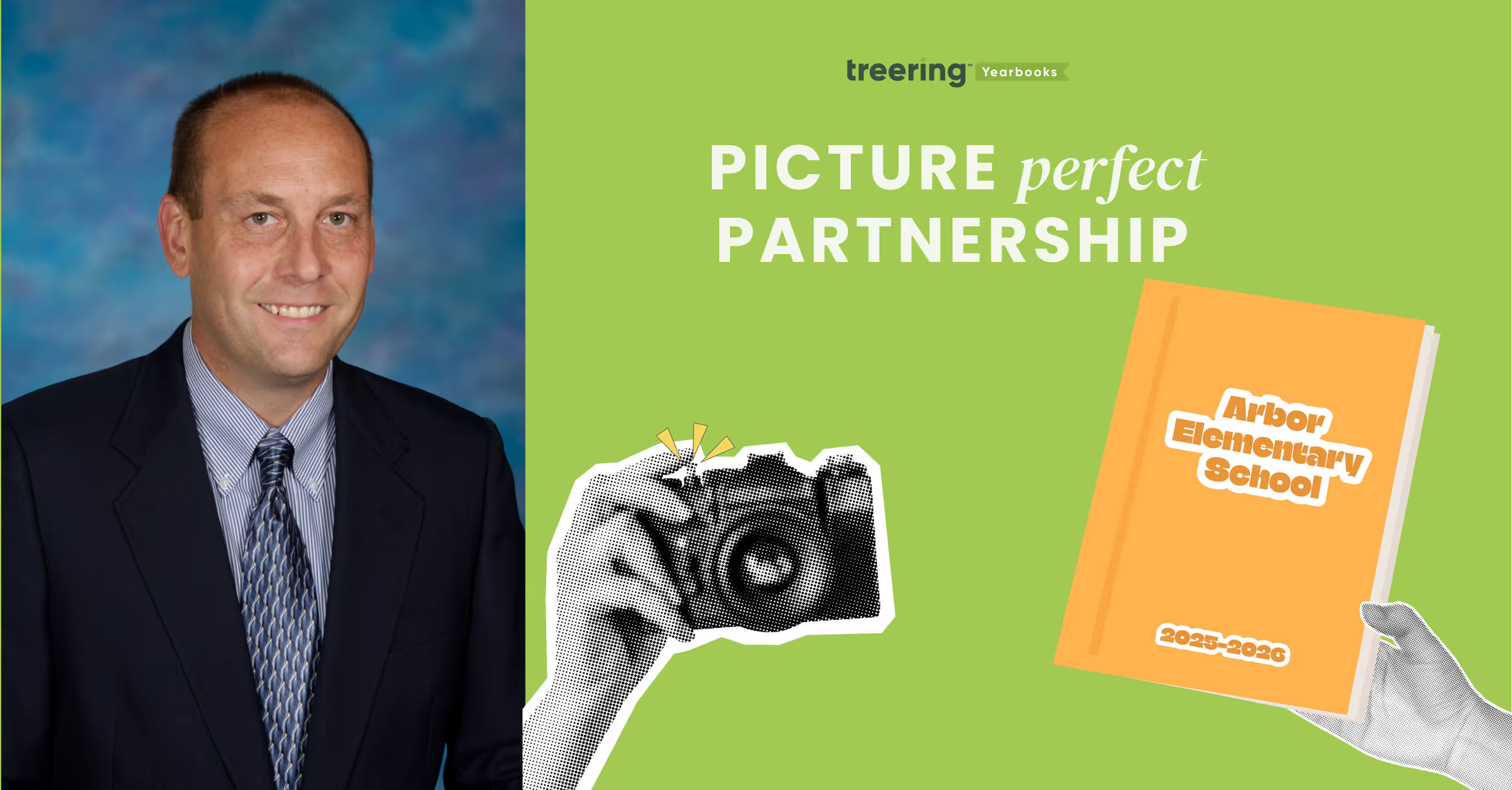
A pro photographer's playbook for perfect team shots
Our guest expert is David Burns, President of Color Portraits - a longtime Treering school photography partner servicing Illinois and Wisconsin. He's been framing perfect team shots since back when "post-game snacks" meant a chocolate bar with nougat and parents weren't yet reading ingredient labels.
After 20+ years and thousands of school photo sessions across the Midwest, I've seen it all—from squinting soccer teams in harsh sunlight to last-minute makeup photo scrambles for absent students. At Color Portraits, we've mastered the art and science of school photography, turning potential chaos into seamless operations that produce stunning results. These battle-tested strategies will transform your yearbook from good to unforgettable—without the headaches, delays, or disappointed parents.
Efficient Scheduling Strategies
For group photo days, we recommend scheduling one group every five minutes. This allows photographers to:
- Set up each group while the next one arrives
- Arrange students in height order for quick positioning
- Maintain a smooth flow throughout the day
For larger groups (school plays, entire grade levels), allow 10 minutes to prevent scheduling backups.
Middle School/Junior High Considerations
Middle schools typically schedule sports pictures three times yearly (fall, winter, spring). We recommend:
- Scheduling after school to accommodate parent-volunteer coaches and uniform changes
- Taking pictures during each sport's season for proper uniform distribution
- Capturing individual photos as athletes arrive in uniform, followed by group shots when coaches arrive
Composition Tips for Various Group Sizes
Create rectangular rather than square compositions to properly fill the frame. For optimal results:
- Utilize stairs, risers, or bleachers to ensure every face is visible
- Incorporate props for club photos to add character and personalization
- Consider photographing sports teams in their natural environment (soccer teams by goals, track teams on the track)
Lighting Techniques: Indoor vs. Outdoor
Indoor Photography:
- Provides consistent controlled lighting
- Allows for fixed flash distance and stable exposure settings
Outdoor Photography:
- Cloudy days offer less light variation but muted skies
- Sunny days provide vibrant backgrounds but create shadows and squinting
- Position groups with the sun behind them and use flash to reduce shadows
- Avoid direct sunlight into the lens
Student Identification Strategies
Send digital images to coaches or club sponsors for proper student identification. Maintain basic row formations to facilitate easy identification.
Balancing Posed and Action Photography
Our standard sports shoots focus on group and individual photos outside of game days. For action shots:
- Collect images from parents or yearbook staff taken during actual games
- Create collage pages featuring action shots from different grade levels
- Position these collages before or after formal group photos
Handling Makeup Sessions
When students miss the original photo day:
- Leave space in the original formation to add missing students via Photoshop
- This approach looks more natural than retaking group photos
- Retakes often create new absences, compounding the problem
File Organization Recommendations
Create an intuitive organization system:
- Establish separate folders for each team and club
- Request proper labeling (team grade level or club name) when parents submit photos
- Always back up all images to cloud storage or external devices
Accommodating Photo Restrictions
For students with privacy concerns:
- Ask parents if listing the child as "Not Pictured" is acceptable
- Omit names completely when parents request
- Prioritize parental decisions regarding their child's privacy
Timeline Planning for Yearbook Deadlines
Plan your photography schedule strategically:
- Capture club photos early in the school year when groups form
- Take sports team photos during their respective seasons when uniforms are available
- Complete all team photography by February at the latest
- This timeline provides yearbook editors ample preparation time
This comprehensive approach ensures your school's sports and club photography will be efficient, professional, and ready for yearbook publication.
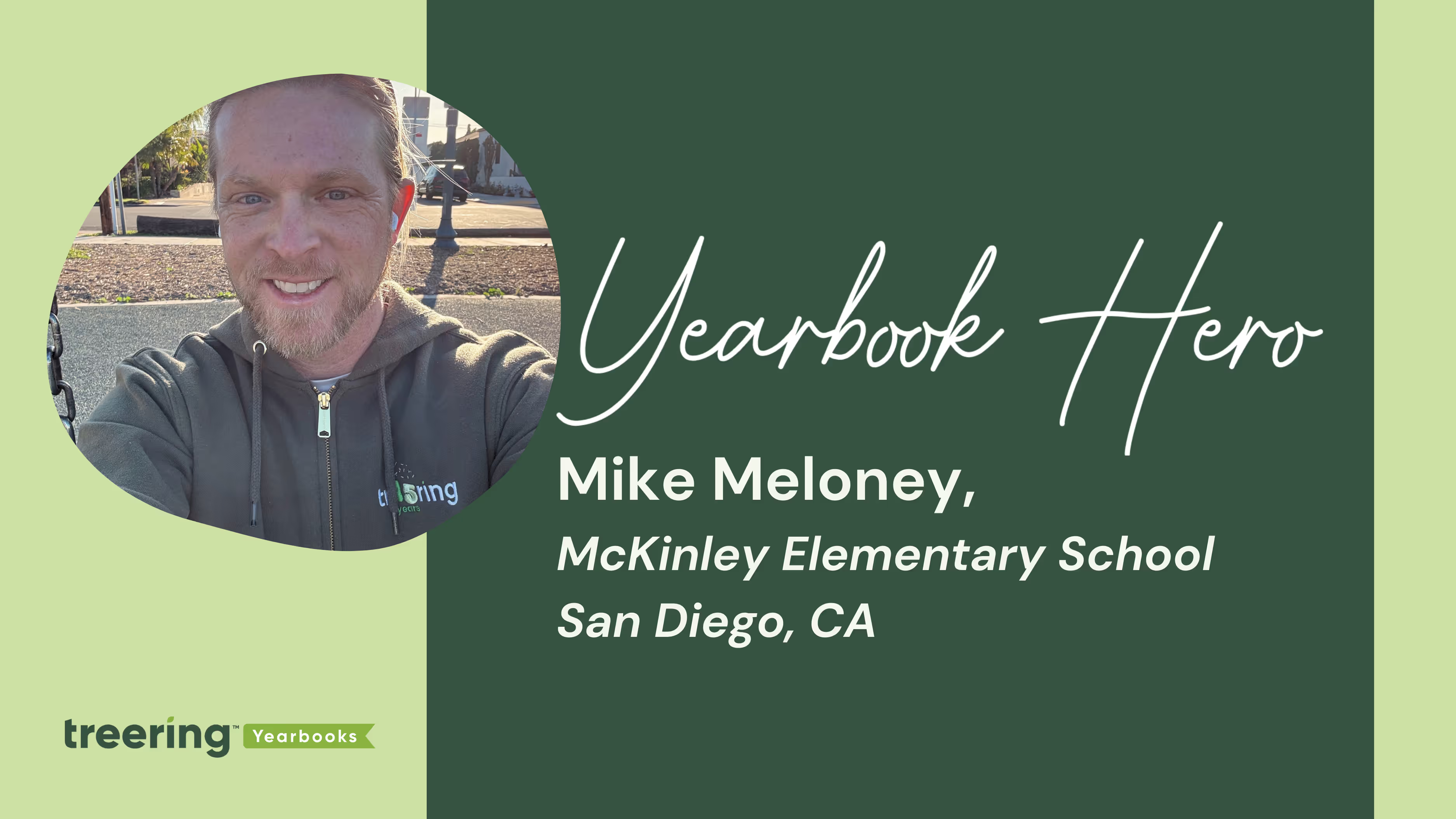
Yearbook Hero Mike Meloney didn’t have time to do the yearbook
Treering Yearbook Heroes is a monthly feature focusing on yearbook tips and tricks.
When Mike Meloney showed up to enroll his eldest son in kindergarten, the principal gave him a hero’s welcome because he was the school's yearbook coordinator. Except Meloney didn’t know he had the job.
How did you get "voluntold" to be the yearbook chair?
My sister works for Treering, and she was helping schools in San Diego make the switch from other publishers. When she called McKinley, Kristie not only sold them on Treering but also on me. She said it would be a great way to connect with the community and engage.
I told her I didn’t have time.
Four years later, you’re still doing the book. How did you help build a yearbook culture at McKinley?
I learned to get organized early. Even without photos, you can still do a ton of work on day one of school to make the rest of the year easier: label every page on the ladder and then make a shared Google folder for each page. Get those shared folders to every teacher, event coordinator, and committee involved. Send reminders once a month to share pics.
It's really been profound to go and take the photos, lay out the book, and help with the sales. When I show up, students say, "Hey, it's the yearbook guy."
Then, at the end of the year, when you give them out, and everyone's just googly-eyed about the year, they have this warm book in their hands. They sign it. It's just so special. And the memories that we make are—I hope—lifelong.
I have about five books left in me. My youngest is now in kindergarten.
What kinds of things do you do at the signing party?
It's all about reflection. One year, we had ice cream—as long as sugar's involved, kids are more engaged.
It's just a special time to be together, really reflect on the year, laugh, and share stories.
Custom pages are a big deal at our school. One person puts in 100, but many folks just do the two pages for free. The more I share about it, the more people get engaged.
At first, there's always the worry about the pages appearing in everyone's book. I tell them, “No, this is just your book that gets those pages.”
Once folks learn how easy it is to make them, they just go to town.
What do your kids think about being the ”yearbook guy?”
I have a unique connection with them and with the community. My kids are fully supportive. They're very critical at the same time. They'll come over and see the book-in-progress and say things like, “That doesn't go there” or “I don't like it.” And if I ever have a question about something, they just answer it.
So, in some sense, they're part of the committee.
What is something special you’re doing this year?
It’s the centennial year. The school opened in February 1925, and now, 100 years later, we're going from the Cougars to the original mascot, the Magpies. We also have an aerial drone shot of the kids lined up in the number 100.
The kids got together to research and interview some folks who were around in the school 60 years ago. They found these folks still living in the community, found old pictures, and made an exhibit.
Next month, there will be a centennial-themed scavenger hunt and, later, a variety show called “A Hundred Years of Stars.”
It’s a special year.
Any final thoughts?
You don’t need to carve out huge amounts of time to focus on making the yearbook, especially in the spring when there is a lot of content and you just have to layout pages. Do one to five pics while your kids are lackadaisical about getting their shoes on. Every moment in the Treering app is a chance to crop, zoom, and make it nice.
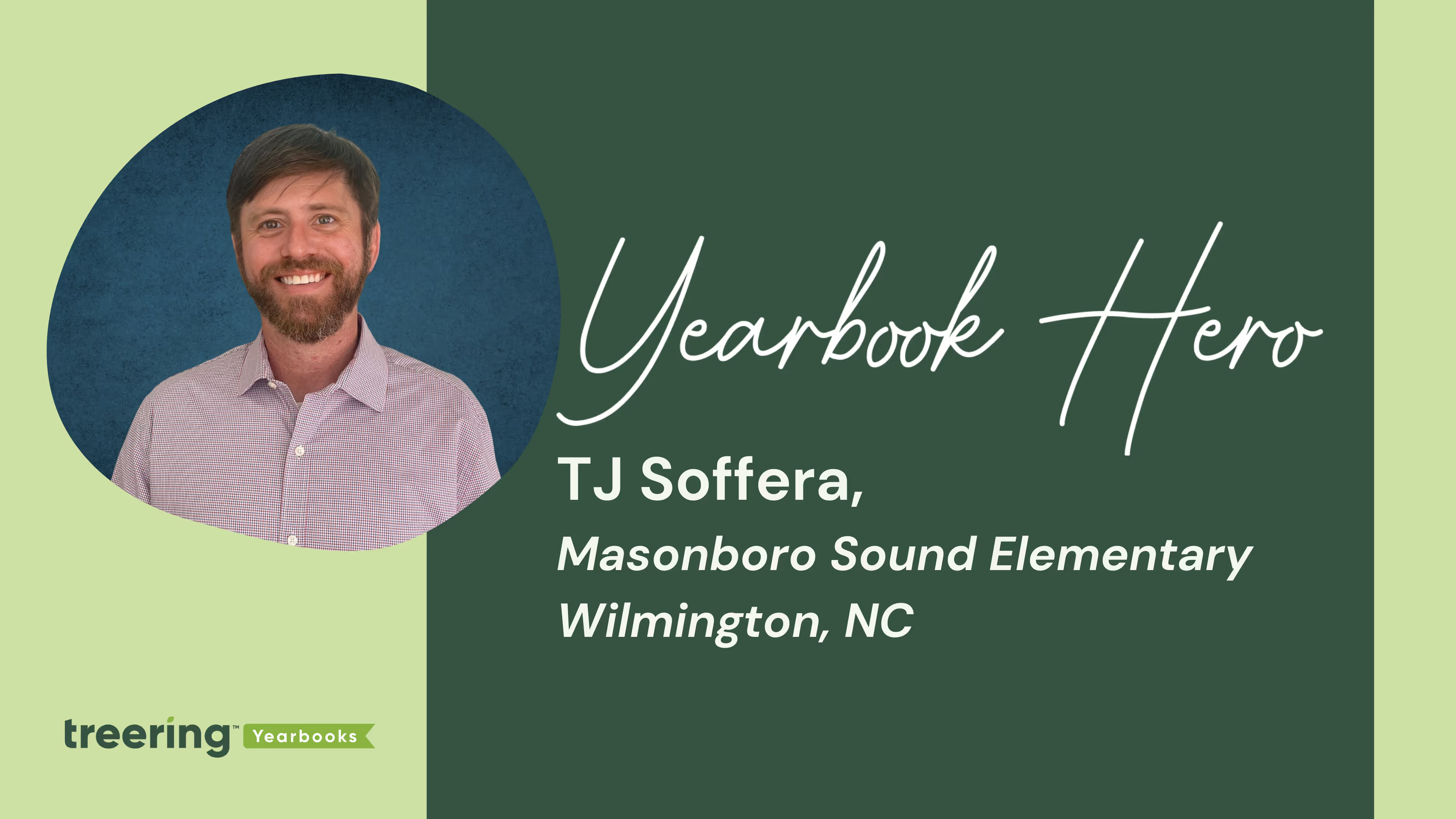
Yearbook Hero TJ Soffera
Treering Yearbook Heroes is a monthly feature focusing on yearbook tips and tricks.
As Treering’s Yearbook Jedi, TJ Soffera helps schools escape the dark side of contracts and order minimums. While his business cards say, “Regional Sales Manager,” parents at his son’s former elementary school—we’ll get to that in a bit—know him as the yearbook guy. He joined the PTA to spend time on campus with his boys and intentionally be involved in their lives.
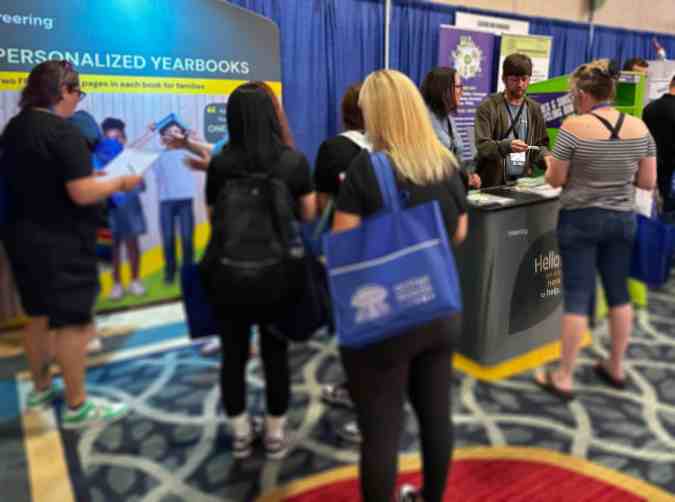
What is it like seeing the yearbook from both sides: creator and publisher?
As the yearbook guy, I love getting parents excited about the custom pages. They allow kids to tell their own stories and capture their unique experiences. I include personal touches in my children's yearbooks, like photos from trips and soccer games. Looking back at them, we can say things like, “That was second grade when we went to Colorado.” That's what's special to me about the books and their longevity.
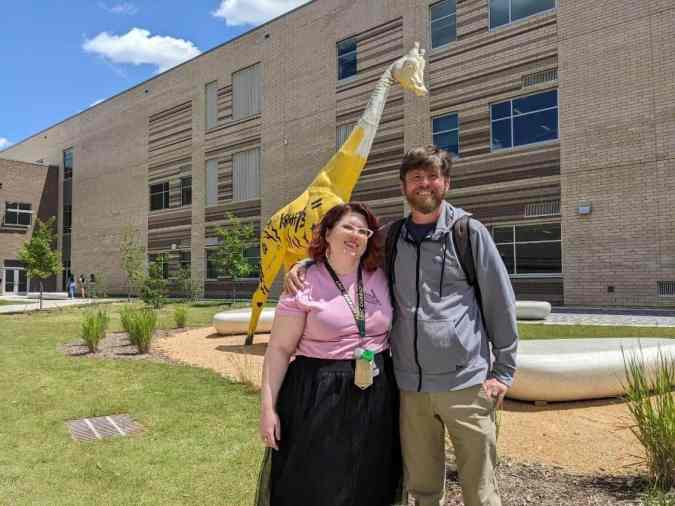
On the flip side, I just love helping people. I love making their lives easier. So many schools that made the switch are debt-free, and it takes away so much stress.
Through the sales process, I've built countless relationships. Three people on my team once were parent volunteers I did a software demo for. It’s important for customers to see we are real people. We, too, are volunteering and working. It builds empathy.
Talk to me more about making lives easier.
Last year, I put the wrong year on the spine of the yearbook. The support team helped me fix it, order a corrected copy, and send it to the newly retired principal.
Mistakes can be corrected, and missing students can be added even after the initial submission. I really do believe this means the world to not only the kids but even more to the yearbook adviser. The person who made the mistake is kicking themselves, and we’re over here going, “No big deal.”
Level with me: why are you still doing the yearbook at a school your kids no longer attend?
Treering’s software is so easy that I don't need much help with it. Really. As long as you have pictures, you can make a book.
I am working to transition out of the role. I put myself in this position because I enjoy it, and the PTA president is great and helps me out. Together, we’re recruiting other parents to help with specific grades so someone can take over next year.
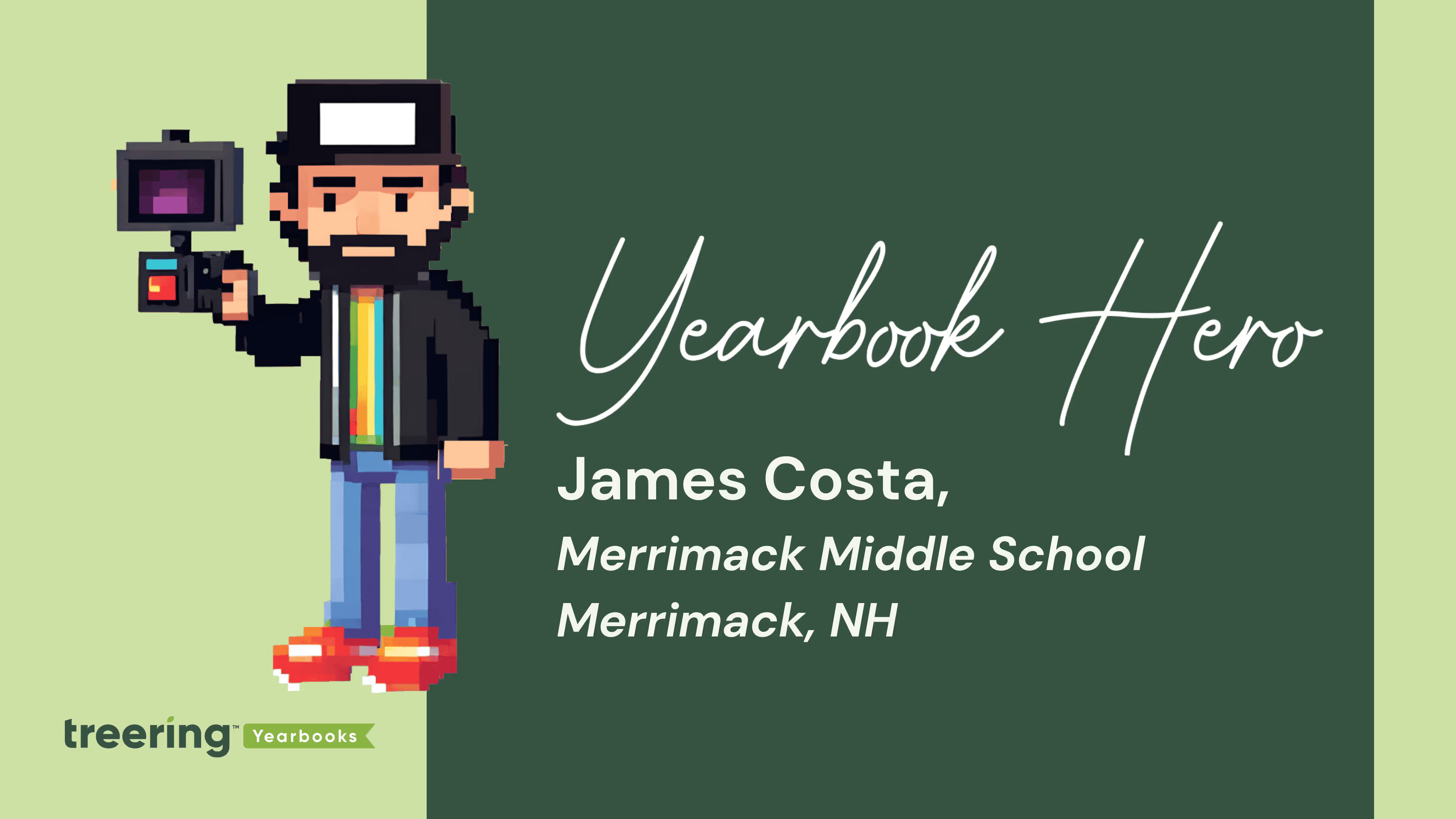
Yearbook Hero James Costa masters middle school
Treering Yearbook Heroes is a monthly feature focusing on yearbook tips and tricks.
Yearbook Hero James Costa moved from the Boston newsroom to the middle school classroom. Taking his skillset in graphic design and desktop publishing to yearbook production, Costa started as the yearbook adviser in November of 2023. Already months behind, he worked to collect photos, design pages, and create a visual look by himself. (Wait until you see the cover below.)
Now in his second year as a yearbook creator, he has moved from the campus’ Digital Learning Specialist to teaching five preps as a Tech Ed instructor. Combining his ten years of scaffolding instruction plus the experience of creating the book solo, Costa developed a team structure and workflow so students could help. Under Costa’s leadership, the members of Merrimack Middle School’s first-ever yearbook club are learning design, marketing, and the business of yearbooking.
There are no grades when you do a club. How do you keep students on task?
I understand certain students' strengths and try to encourage and empower them for that. They all have specific jobs. For example, I have a student editor who is detail-oriented. After a big photo dump in our Google Drive, she’ll organize all the photos into folders and delete duplicates. She has an assistant editor to help.
There’s also a yearbook club secretary, treasurer, and communications and outreach director.
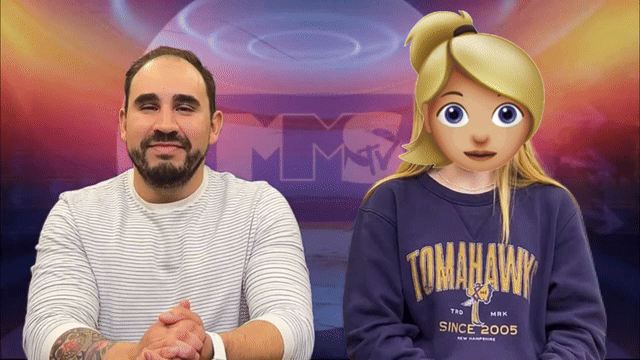
Starting in January, Costa and the street team released a monthly yearbook spotlight. They tease the theme, provide ordering info, and hype custom pages.
My superlatives coordinator is in charge of all things superlatives: making the voting form, taking pictures of the winners, and designing the spread. This is the first time we’ve done superlatives.
Some students are more into design and are on the design team creating spreads. We also have a street team that checks out cameras and photographs events.
I instruct them as much as I can in a whole-group setting, and they also need a lot of one-on-one attention. We have about eight consistent kids.
That sounds incredibly organized. What tasks are currently on your team’s to-do list?
This year is inspired by music. We’re using “Wrapped” and working out how to incorporate elements such as “This or That?” (Olivia Rodrigo vs. Sabrina Carpenter, pop vs. rap). Right now, we're in the stages of just kind of building the ladder and collecting a ton of pictures.

We're just seeing how it evolves and seeing what the layouts give us. I think it's going to be much different from last year's from a design perspective, hopefully, a little cleaner. I had a lot of collages that were kind of just pictures thrown together, but I know the kids like the layouts a little bit more.
Many of us on staff are in love with the “8-Bit” book you created last year. How did you carry it out?
The funny thing about 8-Bit is that I'll show teachers, and they respond, “It's like Mario,” and the kids see it and say, “It's like Minecraft.” So you see that big division in the generations.
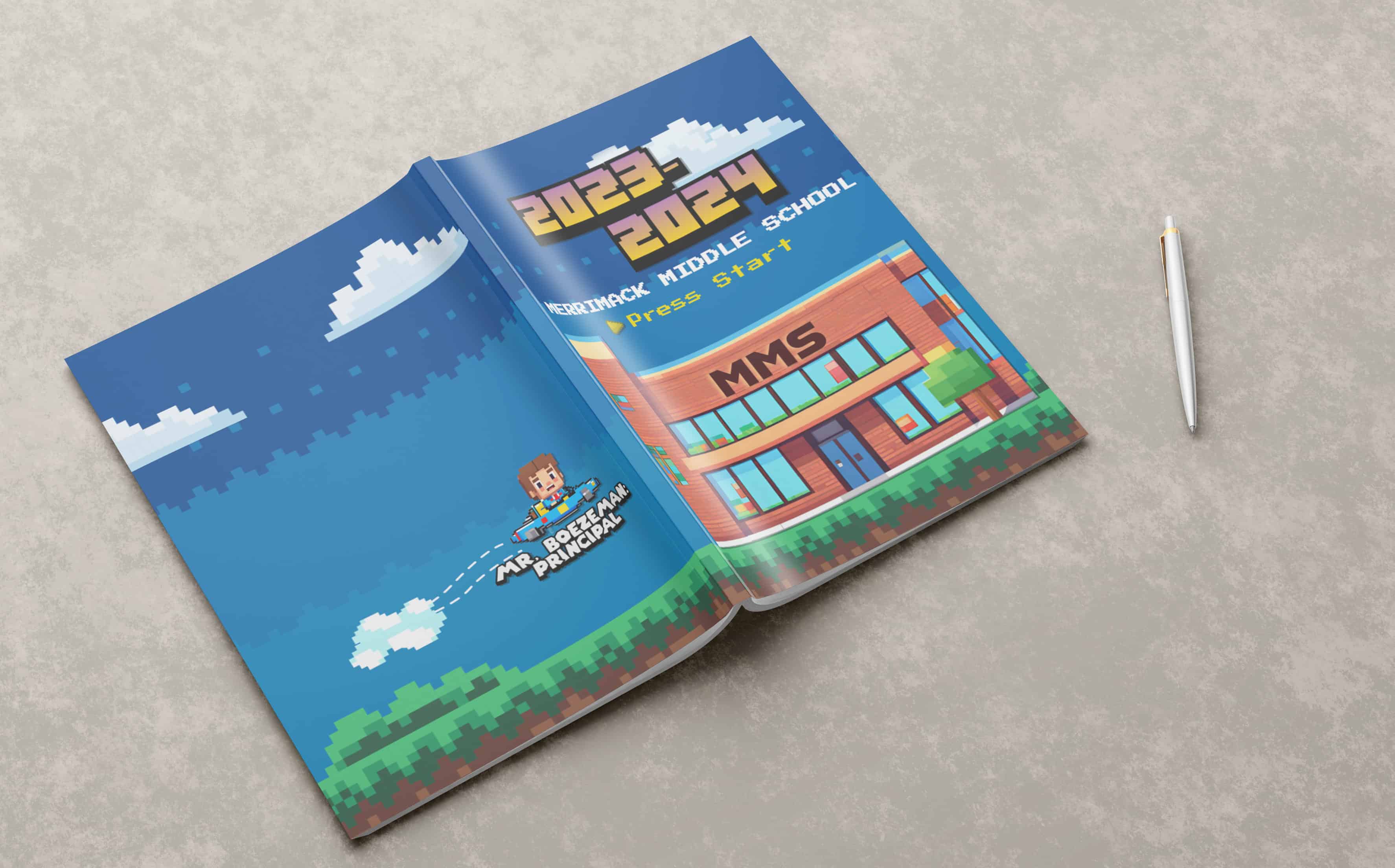
I started with the Treering theme backgrounds as inspiration. On each spread, you see an 8-bit avatar of a teacher. I made those with AI; it was a lot of work word-smithing the prompts to get them to look exactly like the teachers, but that was a lot of fun.
It sounds like fun is a core value of the Merrimack team.
I'm going to give the kids a big shout-out. If I have a tough week, and our yearbook meetings are Friday afternoons, I leave feeling like I had a great day.
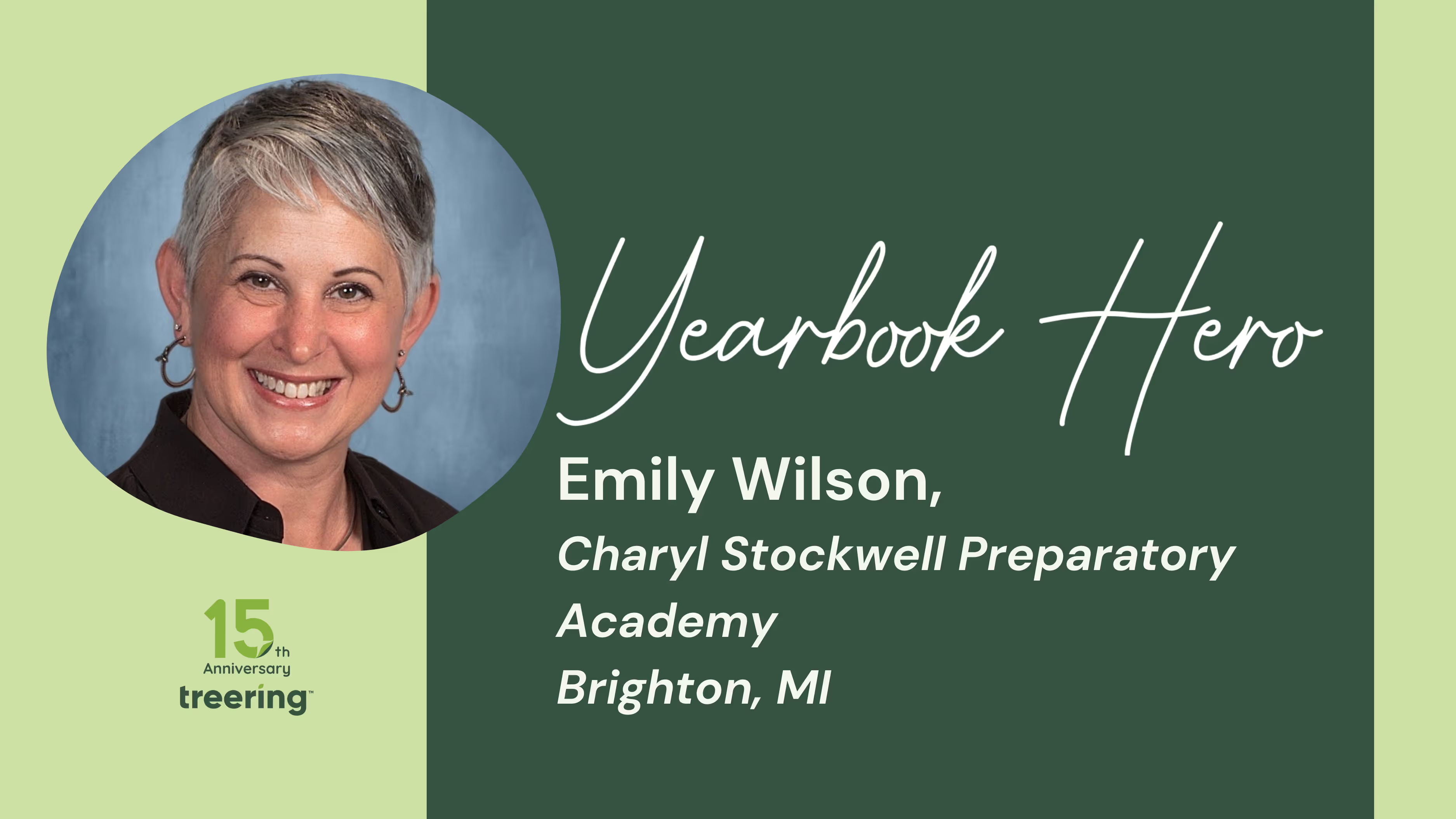
Yearbook Hero Emily Wilson’s lessons learned and achievements earned
Treering Yearbook Heroes is a monthly feature focusing on yearbook tips and tricks.
Uncertainty. That was the word of the year in 2020. Just two weeks before the school year began, Emily Wilson unexpectedly stepped into the role of yearbook advisor.
At the time, Charyl Stockwell Preparatory Academy (CSPA) was one of the few in the area offering both in-person and virtual classes. Like many, they faced challenges: masked students and staff, strict social distancing, limited outside visitors, and restricted volunteer involvement. These constraints forced a complete reevaluation of traditional yearbook creation methods.
To meet these challenges, the school switched to Treering, drawn by its intuitive software, online support, and the ability to crowdsource photography—a feature that became essential with reduced staff and student participation. Now, five years later, the school is producing its fifth yearbook using Treering.
How did you become the Yearbook Adviser?
Before becoming the yearbook advisor, my career focused primarily on teaching English, literature, and creative writing. Journalism and yearbook production were never areas where I expected to excel, but I always admired our previous advisor for the award-winning program she built. Her accolades still hang in our hallway, a constant reminder that there is always room to grow. Over the years, I’ve gained confidence as an advisor, building relationships with our student staff, and producing yearbooks we’re proud of. The experience has been transformative for both me and my students.
How has your involvement with your state’s journalism association impacted your skills and opportunities in the field?
In 2022, I was honored when the Michigan Interscholastic Press Association (MIPA) invited me to serve as a judge for their yearbook competition. It was a valuable opportunity to see what award-winning yearbooks looked like up close and personal, and it gave me insights into how our own yearbook could evolve. To my surprise, we were much closer to hitting the mark than I had anticipated. That experience gave me the courage to submit our book for critique, and we anxiously awaited feedback from MIPA.
After three long months, the results came in: we had earned a Bronze award for our 2024 yearbook, with a commendation for excellence in photography. The recognition was a testament to my students' hard work and dedication. But what stood out most to me was their reaction. Rather than getting too comfortable with their achievement, students immediately started thinking about ways to improve for next year.
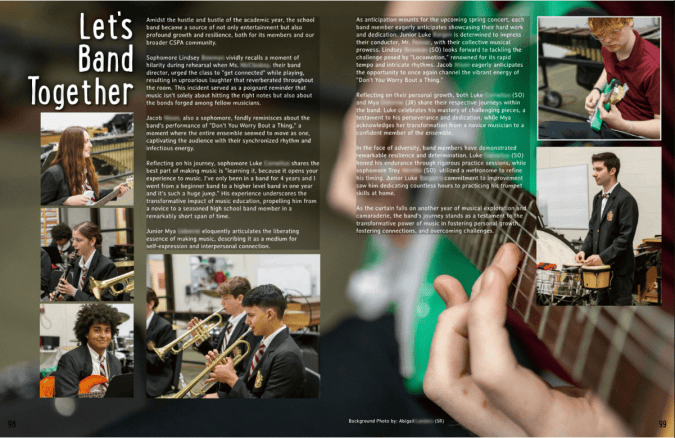
One of my editors-in-chief said, “We were only 47 points away from earning a Silver Medal,” and immediately began brainstorming ways to improve. That mindset—that focus on what we can achieve next—is what makes this journey so rewarding.
Let’s talk about that critique. How did it benefit your team?
One of the most valuable aspects of submitting our yearbook for critique is the detailed feedback we receive, which helps us grow. We are focusing on a unifying concept and improving coverage.
To be more competitive, we need to create more original graphics and artwork for the yearbook rather than relying on pre-made designs. Fortunately, Treering’s platform makes this process straightforward. For instance, last year, one of our International Baccalaureate Art students designed the cover art, which we seamlessly integrated as the background for the cover.
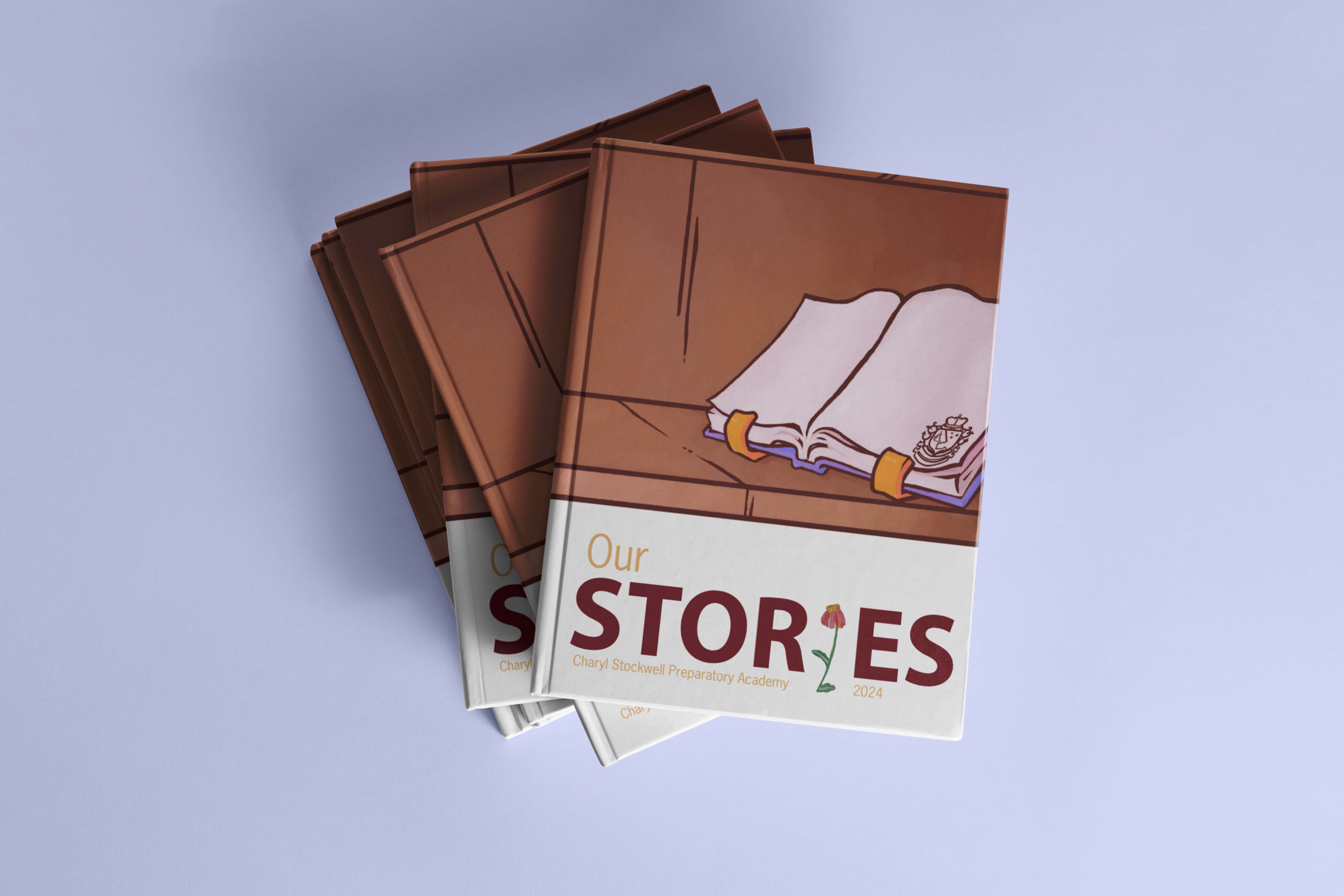
Additionally, we learned that carrying the theme throughout the book is essential—right down to the headlines and titles. Last year’s theme was “Our Stories,” but we could have done more to tie the theme together by using idioms or expressions related to storytelling across different sections of the book.
Design consistency is one of the easiest ways to make a bigger impact. MIPA suggested that we choose one unifying style for the entire book—colors, patterns, and layouts should be consistent throughout. This allows us to maintain a cohesive aesthetic while allowing for flexibility in layout design.


While we did a solid job covering our school’s 11 non-athletic clubs and 17 athletic teams, we need to focus more on individual stories—highlighting specific student achievements and weaving in features that reflect the times, like the cost of living. We’re also working on improving our balance of academic content; as MIPA pointed out, “Not every student is in a club or plays a sport, but every student sits in a desk in class.”
What is your area of strength?
We were thrilled to receive commendations for our photography, an area where we truly excel. Our focus on candid photos and capturing moments of excitement paid off. Moving forward, we’ll continue to refine our photography skills, paying more attention to cropping, editing, and ensuring that photo credits are included on every image.
What will be your focus this year?
Writing is where we have the most room for improvement. Every photo needs a caption, and those captions should follow journalistic writing standards—using active voice, varied sentence structures, and avoiding overly descriptive language like “is running” or “is playing.”
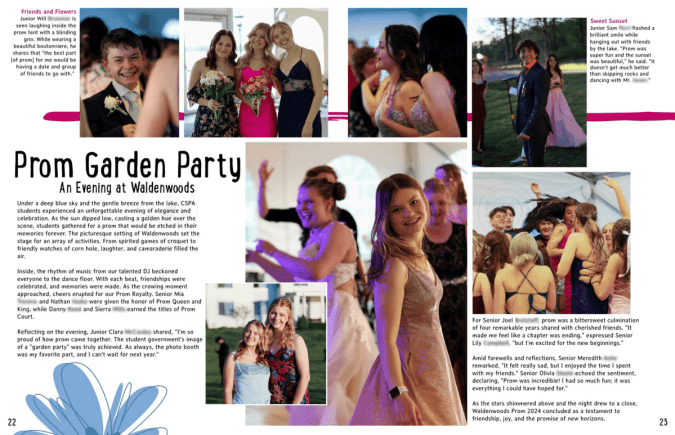
We also need to use secondary headlines to draw readers in and provide additional context. The critique also reminded me that, as an English teacher, I’ve been teaching students to write like English students, not like journalists. This is an area where I plan to invest more time, learning more about journalism standards so we can elevate our writing to meet those expectations.
What is the role of a yearbook adviser at CSPA?
Our yearbook, “The Sentinel,” is a labor of love produced by a small but dedicated team. I advise a staff of four students. We serve a high school with approximately 320 students. Every year, we produce a 150-page yearbook that covers everything from the start of school through prom, delivering it to students during the last week of school.
Additionally, we create a 28-30 page supplemental softcover book for the senior class, which includes coverage of senior-specific events like Senior Sunrise, Senior Awards, and Graduation. This supplement also features graduation speeches and letters from teachers to the graduating class. Design-wise, it complements the theme of the main yearbook. We print the student commencement speech in this supplement.


To bring our yearbook to life, we rely on a combination of Treering’s software, Canva, and Adobe Lightroom. Our resources are modest—one laptop, one large monitor, and two Rebel cameras—but we make the most of what we have. Fundraising through Treering has helped us pay for essentials like new camera lenses, a journalism camp for our editors, and lighting equipment for portrait photography. This year, our goal is to raise enough money for a new camera and upgraded lenses to continue improving the quality of our work.
What’s next for “The Sentinel?”
As we look ahead, we’re excited to continue improving. We’re going to hang our Bronze Medal plaque on the wall as a reminder of how far we’ve come, but our eyes are already set on the next challenge. We’ll keep pushing ourselves to tell more meaningful stories, refine our writing, and produce a yearbook that our school can be proud of. Ultimately, it’s not just about winning awards but about creating something our students, staff, and community will cherish for years.
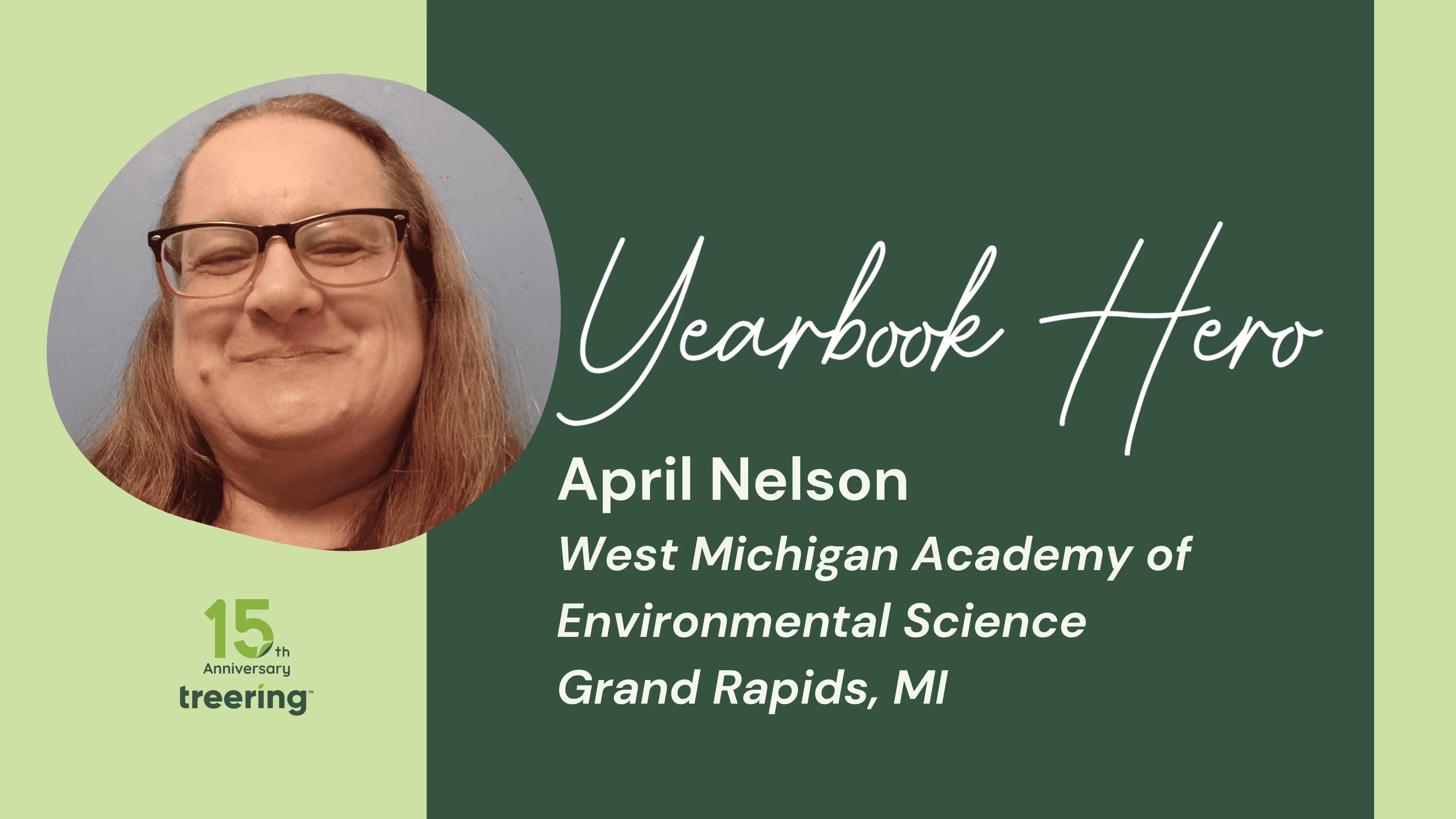
Yearbook Hero April Nelson makes two books… and likes it
Treering Yearbook Heroes is a monthly feature focusing on yearbook tips and tricks.
What could you do with a group of four elementary students? How about a middle school club of 10? April Nelson produces separate elementary and middle school yearbooks for her pre-k-12 school. And she won’t take credit for it.
Big picture: How do you manage two teams to create two different books?
My job is to advise and let the kids lead. I look over everything the students create to keep things appropriate and ensure equity in coverage. Each year I cede more control to the students.
This year, the elementary students chose their theme and the middle schoolers created their own ladder. We started with a sample layout from Treering and discussed what had to go in and what they wanted to go in the yearbook. Then, we budgeted pages appropriately.
They really wanted it to be their book. I really try to make it their book.
What does theme development look like with your elementary students?
They chose “Galaxy of Possibilities” for their yearbook theme. It’s fun. Throughout the book, they will incorporate famous quotes about possibilities and dad jokes about space. On the staff spread, it talks about teachers being rocket fuel. They designed their cover and title page. They're enthusiastic.
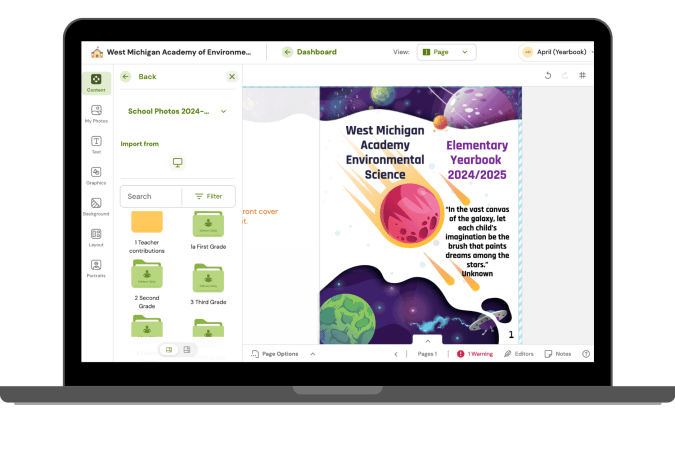
With only four students meeting once a week, organization is key. I helped them use folders to organize photos so we could keep everything by topic. I communicate with the students and their families regularly and use Google Classroom for assignments and questions.

How is the middle school club different?
Their ambitions are really high, and I love that they're aiming big. But we have to stay realistic—there are only a certain number of pages and a limited amount we can include. I tell them we may need to scale it back a bit, but I’m still excited to see what they’ll create.
Typically, students come in, grab a Chromebook, and log into Treering. They check how many photos they have and figure out how many more they need. For example, they might notice that they only have photos from one volleyball game and need coverage of another. Then, someone will look up the school website to see when the next game is scheduled.
I love that they want to just keep working on stuff.

The middle schoolers do a mix of Treering templates and their own designs. They chose to do a board game theme and hired a senior who is dual-enrolled to do the cover design. She came into one of their meetings and they shared their vision, and she drew it out.
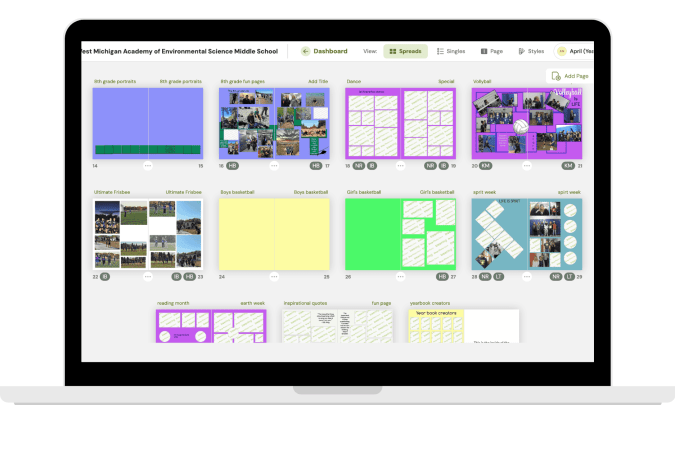
Inside the book, the game starts in sixth grade. On the pages, they put fun spaces: they've got things like “You skipped class. Go back four spaces.” “You finished Percy Jackson. Go four spaces ahead.”
Before partnering with Treering, how did you manage multiple books?
I didn’t! My first year advising was an elementary and a combined middle/high school book. We used to send photos to our previous publisher, and they would create the yearbook. The students didn’t like it because it lacked organization: pictures were thrown together without captions of identifying information. You couldn’t distinguish prom from a dance, and our big Earth Week celebration was sprinkled throughout. Unless you went to the school, you wouldn’t know what was what.
Switching to Treering made the yearbook more personal. We split the book by schools (elementary, middle, and high) when we made the change. It also empowered students to create the book they wanted. The elementary students are now writing basic captions.
Treering allowed them to do that.
Admin was also on board. We’re an environmental school, so our principal loved that there is no waste. We only receive what we pre-order.
How have you seen the yearbook impact students?
If you can develop that rapport with your staff and they know they have the power, they will do great things.
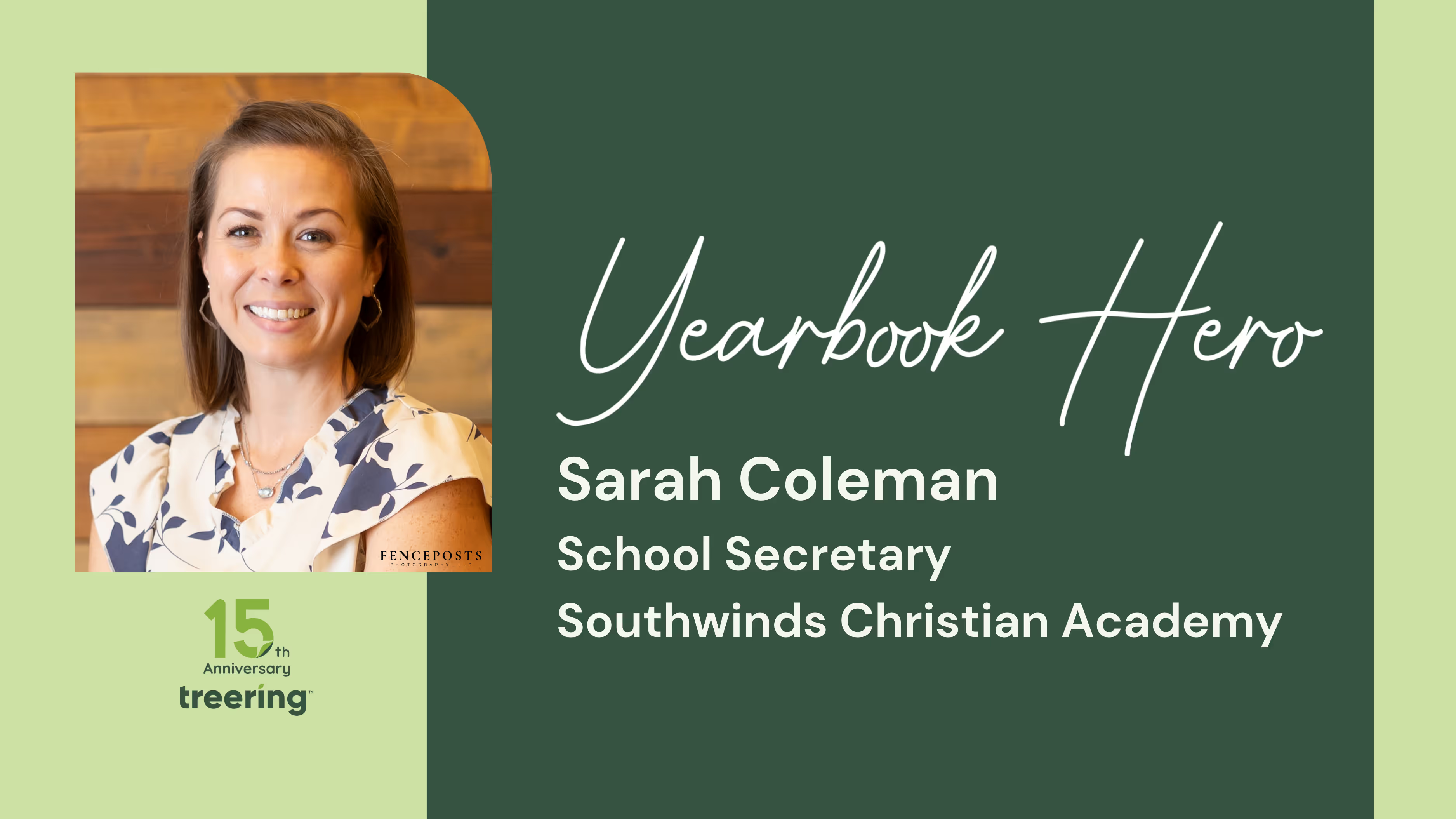
Yearbook Hero Sarah Coleman comes full circle
Treering Yearbook Heroes is a monthly feature focusing on yearbook tips and tricks.
In high school, Sarah Coleman joined the yearbook staff for the varsity letter. As a competitive dirt bike racer, she could not earn one through school-sponsored sports.
The yearbook became more than just a means to a jacket.
What value did being on the yearbook team bring to your high school experience?
Student journalism was a means to be involved in everything. I got to know all the students on campus—they didn’t know me—through this inside look. I was the first-ever editor of both the yearbook and newspaper. My focus was on writing (there was another editor who led the design aspect).
Now, you’re an adviser! How have things changed?
I never thought I'd be working on the yearbook again, ever in my life. Being able to knock it out with ease was pretty cool. Photos are so much easier to upload. I see in real-time what my edits do. Also, the printed proof is the actual book. I know that even this past book, I overlooked things from the computer side that I caught on the print side. I remember we used to have paper proofs. There were no tools to show us duplicate images or an easy way to duplicate layouts. It seems archaic compared to what Treering offers.
For example, during my senior year, in February, someone knocked over our server, and we lost our entire yearbook. We had a few weeks to rebuild the layouts. It was horrible. We got it done, but it was horrible. The entire book was due by March so that we could get it by the end of the year. We also made an insert with a sticky back to include more events. It was mailed out in the summer. That was the dumbest thing. What I like about Treering is that you can go all the way through the end of the school year and still get the book back in less than a month.
You’re about to begin your second yearbook for your school. What do you do to make it special?
Because we are a smaller school with a little over 120 pages, every student gets their own spread. Their fall and spring pictures are there to show growth. I put every event in the book: big ones, like a foam party, and even the little ones, like crazy sock day.

Kids loved the custom pages. They're so excited because they made their yearbook all about them.
How do you get all the photos?
I take photos whenever I’m out and about on campus. I tell the teachers to let me know whenever they are doing something like an experiment. Teachers tell their students, “The yearbook lady is coming; look alive.” I really hate staged photos.
Our kindergarten teacher showed the others how to put the Treering app on their phones so they could share. The church secretary also takes a lot of photos. We also encouraged our parents to log in and create an account so they could add theirs. Two moms contributed a bunch. Now that the school community has seen the yearbook, I’m hoping more will participate next year.
I’m also working on getting a digital camera for teachers to use.
Any other takeaways from your progression from a student editor to a yearbook adviser?
Treering is also economically pleasing to work with. The books are a great price and nice, thick quality. You don’t have to be a professional to have a good book. The designs available just elevate everything.
I come from a strong yearbook culture. My mom bought every yearbook for us, and I do the same for my kids. I love that if people didn’t buy one early, they can still order it. As a creative person, it’s nice to be able to make something for others.
Coleman's photo courtesy of Fenceposts Photography, LLC.
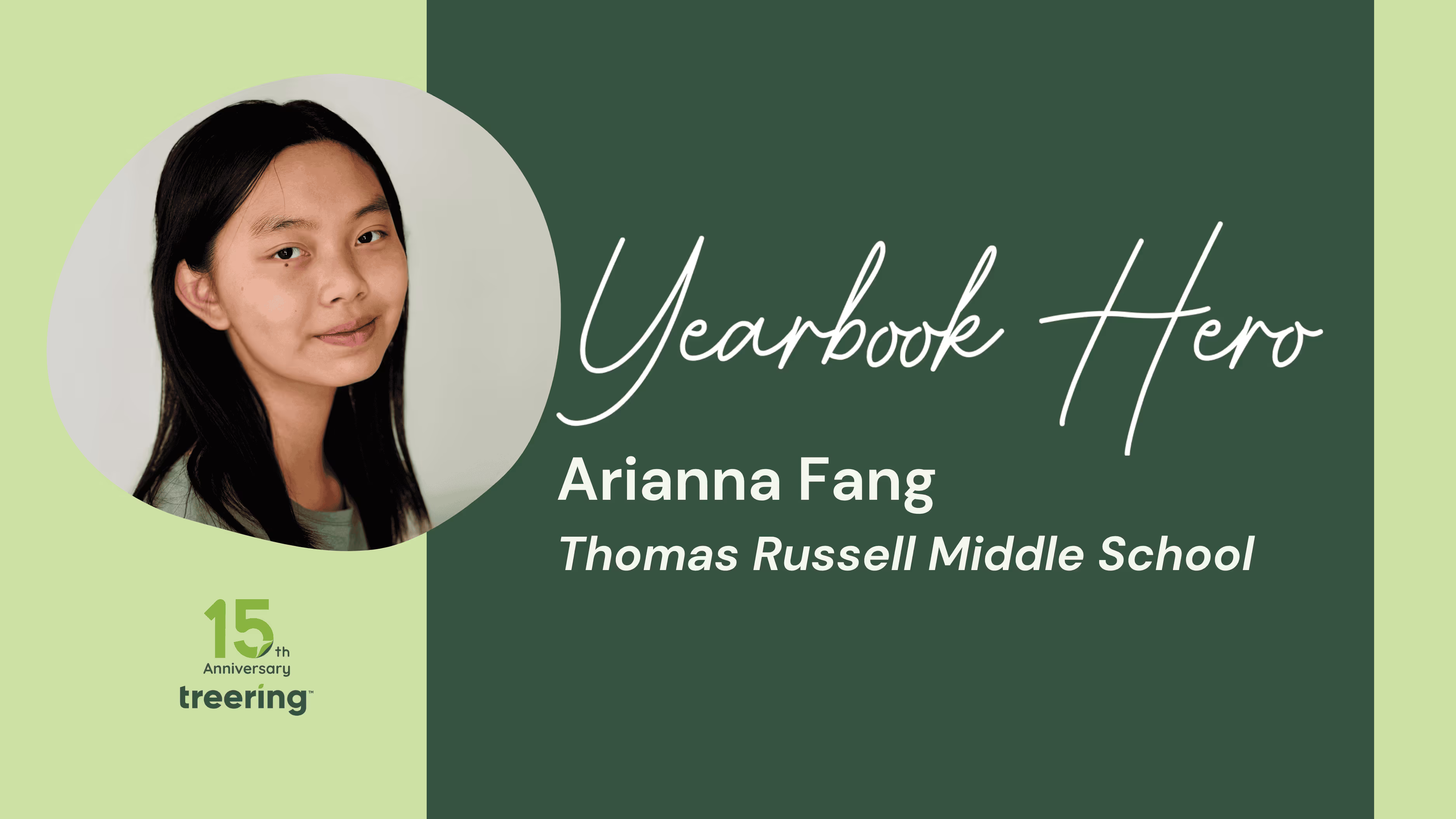
Yearbook Hero Arianna Fang
Treering Yearbook Heroes is a monthly feature focusing on yearbook tips and tricks.
As an elementary student, Yearbook Hero Arinna Fang volunteered for the yearbook team as soon as the opportunity opened. Publication design became a form of self-expression. The future English teacher served as an editor for her middle school yearbook, where she became the youngest winner in the Treering Spread Design Contest.
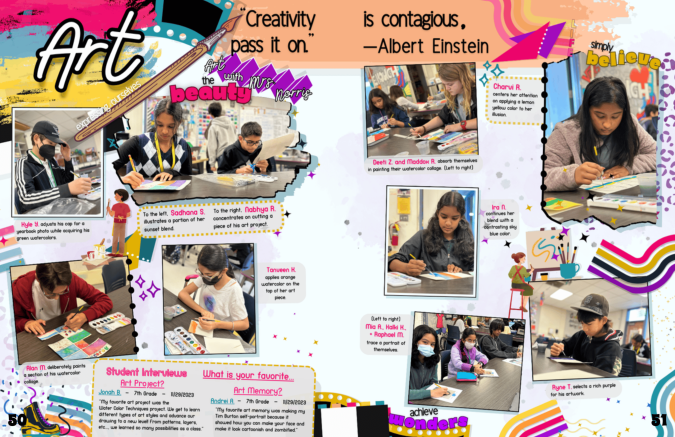
What did it mean to have your design win national recognition?
It was quite unbelievable. My teachers were really supportive, and my yearbook adviser showed the whole class.
What advice do you have for other students getting started in yearbook design?
Everything starts with a vision. For my spread, it began with the Einstein quote. I wanted the design to flow from there. If it were a math spread, I would have kept it more organized and angled.
When my classmates get stuck, I help identify the problem and fill the need. Sometimes there’s no inspiration; sometimes no flow.
Music is a help. I have playlists that I cycle through to get inspiration. I use the emotions in the music to pull into my designs.
How do you organize your yearbook team?
My adviser let us be like adults. My co-editor and I directed the design. My adviser let us be like adults, and my co-editor and I directed the design. I always think 400-something people are buying these yearbooks, and I don't want to let them down.
Regularly, we did Yearbook Updates, a slideshow with everyone’s current spread status. This helped us examine the entire book. Everyone benefited from the responses because we taught them how to speak in uplifting ways by emphasizing the positive with “This is what we want” and coaching others with “This could be improved.”
We validate each others’ voices by creating a safe place to share ideas.
How did you develop your theme visually?
We didn’t have a style guide. Everything we used came from the power of communication. When people would submit their spreads, my co-editor and I would add theme elements if warranted. This enhanced and honed the design and made it part of the overall look.
What’s the best way to get a quality quote from a middle schooler?
The biggest thing is to take a chance. I tell people to start interviewing their friends before approaching others. Ask questions about feelings. People love what they do and love to share.
Additional Middle School Yearbook Resources
(In case you don’t have a student leader like Fang...)

Yearbook Hero Laura Dauley’s winning design tips
Treering Yearbook Heroes is a monthly feature focusing on yearbook tips and tricks.
Every year, Laura Dauley writes her kids a letter. Part recap, part encouragement, these letters get tucked away in a treasured collection. This year, the mom-of-two switched things up and added it to the yearbook. And entered it in a design contest. And won said contest. We asked Dauley, as the K-8 division winner of the Memory Marvels 2024 Custom Page Design Contest, to share her tips for creating an authentic, memorable custom page design… that won’t embarrass.
How did you come up with your design?
Harper’s moving on to high school. I wanted to commemorate 11 years at the same school, from first days to playground memories. Digging through photos from the same time every year was emotional. I included our dogs and her brother, who’s been with her every step of the way, to remind her of all they shared.
It was a fine balance to not select a pic she wouldn’t be embarrassed over. There are many memories and experiences, so I also didn’t want it to be chaotic.
What does it mean for your daughter to have space dedicated to HER in her book?
What’s cooler than your eighth-grade yearbook?
This was in the context of something she was already excited about: her friends, and her memories. And I got to tack on to that. Only she had this. When they pass around the yearbooks, she has something special and unique. Her custom pages allowed me to make an emotional connection with her.
She also thought it was cool that her pages won. She’s always been proud of me making things for her along the way.
You’re a designer by trade. What advice do you have for parents getting started with their custom pages?
Less is more. Keep it simple. Focus first on what you want to feature and then add graphics. Don’t start with flashy, arbitrary graphics. Here’s the process for Harper’s custom pages:
- Images first
- Then the letter
- Then years, color scheme, and typefaces
It could be a daunting task. Even if you don’t know design, you can make a really cool page. I told all my friends to go online and start with the Treering templates. I was surprised with the flexibility and that I could create something from scratch.